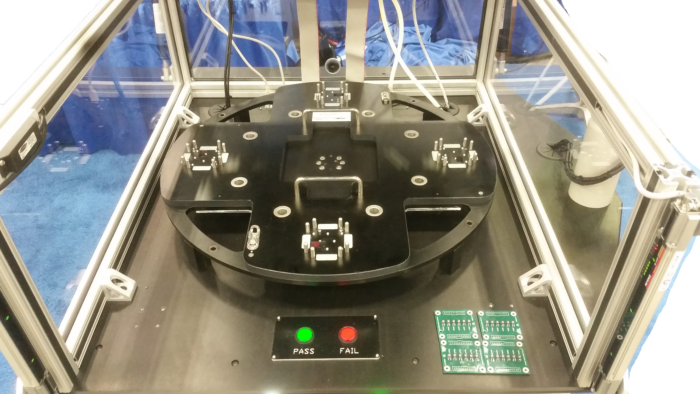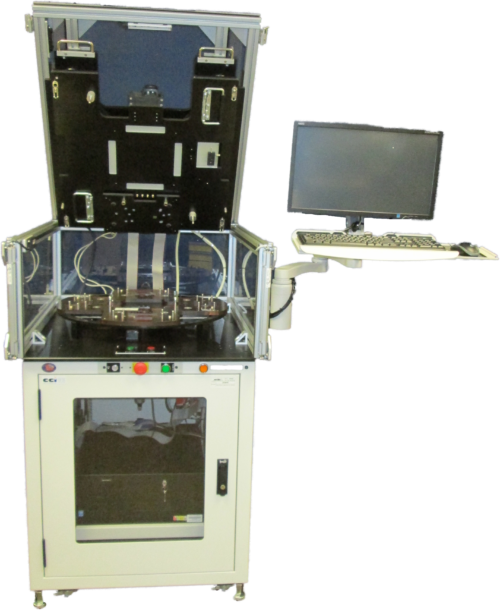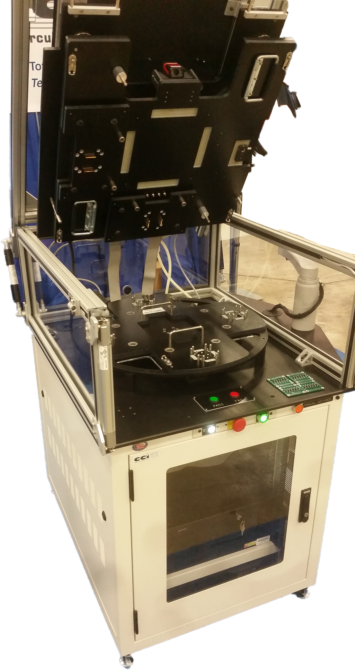Overview
- Configurable for product test, programming, inspection, and/or marking
- Supports many open measurement hardware standards
- Integrated rack and cabinet
- Fully controllable station indexing beat-rate
- Interchangeable dial plate fixturing
- Specially designed fixture alignment tooling pins
- Operator safe operation with light curtains and fail-safe fixturing
- Number of stations is configurable for complete test strategy implementation
- Ideal for high volume production where cycle times are short and the operator load and unload tasks need to be minimized




